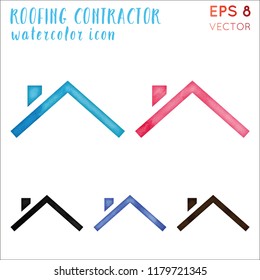A Relative Analysis Of Exterior And Interior Paint: Essential Distinctions And Applications
A Relative Analysis Of Exterior And Interior Paint: Essential Distinctions And Applications
Blog Article
Composed By-Fitzpatrick Henry
When you're selecting in between exterior and interior paint, it's essential to recognize their fundamental differences that influence both efficiency and appearances. Inside paints are crafted for lower VOC degrees and smoother finishes, making them suitable for interior spaces, while exterior paints are made to endure extreme weather and UV direct exposure. Each kind serves an unique objective, however knowing when to utilize one over the other can greatly influence your job's result. So, what aspects should you consider when making your choice?
Composition and Formulation
When choosing between exterior and interior paint, comprehending their structure and solution is crucial. Inside paints normally consist of a lower quantity of volatile organic substances (VOCs), making them more secure for indoor air quality. You'll notice they often have a smoother coating, which improves their ability to resist stains and permits much easier cleansing. They're developed to hold up against the rigors of interior settings, including differing humidity levels and temperature level changes.
On the other hand, outside paints are developed to sustain harsher problems. They generally consist of greater levels of pigments and ingredients to resist fading from UV rays, as well as to stop mildew and mold and mildew growth. Their composition includes extra binders and materials, which provide far better adhesion to surfaces exposed to the aspects. This makes certain the paint can stand up to rainfall, snow, and changing temperature levels without peeling off or breaking.
Performance and Longevity
Evaluating performance and durability is vital when choosing in between exterior and interior paint. Interior paint is developed for surfaces that experience less wear and tear. It typically resists fading and scuffing, making it suitable for living rooms and bedrooms. Nonetheless, it might not hold up well in high-moisture areas like kitchens and bathrooms without appropriate solution.
On the other hand, outside paint deals with harsher conditions. It's crafted to endure UV rays, rain, and temperature level changes. This kind of paint typically consists of additives that avoid mold and mildew and mold development, ensuring longevity in different climates. When house painting make use of external paint, you can anticipate it to last numerous years much longer than interior paint, provided it's applied correctly.
An additional key difference hinges on the finish choices. Inside paints often have a range of finishes for visual appeal, while exterior paints prioritize toughness over shine. If you're looking for something that can handle the aspects, exterior paint is your best option.
On visit the next page , if you're concentrated on interior appearances with much less concern for extreme conditions, interior paint could be appropriate. Eventually, your choice needs to align with the certain demands of the setting.
Visual Considerations
A fresh layer of paint can change an area, but visual considerations play a vital duty in your option between exterior and interior alternatives. When you're selecting paint, think of the mood you intend to create. Interior paint permits you to check out a larger variety of shades and surfaces, enabling you to share your personal style and improve your home's ambiance. Whether you go with soft pastels or bold shades, the right interior paint can make your areas really feel relaxing, lively, or calm.
On the other hand, outside paint requires to line up with your home's architecture and the surrounding atmosphere. Below, you're not simply making a style statement; you're also thinking about visual charm. Picking shades that balance with your area can enhance your home's value and aesthetic charm. Bear in mind that outside paint is also subject to fading and weather adjustments, so picking a timeless shade can save you from regular repainting.
Inevitably, think about exactly how each choice fits your vision. By aligning your paint option with your preferred aesthetic, you can develop areas that reflect your individuality while preserving capability.
Conclusion
When it comes to selecting paint, comprehending the essential differences in between exterior and interior choices is important. Interior paints focus on looks and low VOCs, making them excellent for enhancing your indoor rooms. In contrast, outside paints are designed for sturdiness and weather condition resistance, safeguarding your home from the components. By considering your specific requirements and the atmosphere, you can with confidence pick the right paint to accomplish the look and longevity you prefer for your area.
